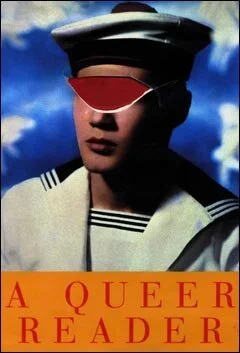Exploring the Archive: Neoqueer
By Stephenie Gunn, CoCA Intern
Throughout the CoCA archives, there is an impressive variety of thought provoking and engaging exhibitions - ones that challenge the viewer to question their own values and encourage reflection on oneself and the past. One of those exhibitions is the 2004 annual exhibition of the Queer Caucus for Art, Neoqueer. Neoqueer presented a variety of intriguing questions that are still highly relevant today; particularly the questions pertaining to the public reception of un-politicized queer art, as well as what defines queer content. The exhibition challenged artists to answer the question, “What does it mean to produce queer art today?”.
Neoqueer sought to display a wide variety of queer art from a very diverse collection of artists and their experiences. When viewing the various pieces from this exhibition, a viewer might find oneself gaining an appreciation for the immensely unique experience that is queerness. This includes not only intense and vibrant displays of queerness, but also the subtleties and less obvious moments. As we look back at the goals of Neoqueer and that overarching question of “What does it mean to produce queer art today?” it becomes apparent that there is no one way to answer this. Every queer experience is entirely different from the next, and such a multitude of representations speaks volumes when it comes to the richness and complexity of queer art.
When exploring the art from Neoqueer we see that diversity. We see an approach to masculinity in Laurie Toby Edison’s Familiar Men: A Book of Nudes. We see themes of censorship and destruction in Harmony Hammond’s A Queer Reader. On a more subtle note, we witness the intimate moments from Danica Phelps’ illustrations and journal pages in her Integrating Sex into Every Day Life. Neoqueer demonstrated that queer art can not be defined in one specific way. Rather, that queer art is simply a result of a queer artist. As we see in Hammond’s work, queer art can be based in political themes, but it can also depict more intimate and understated moments like in Edison’s or Phelps’ work.
As a queer artist, I find myself particularly drawn to this exhibition. It’s not often that I encounter such a diverse representation of the queer experience, even now in 2021. In media and most mass presented feminist content, we are shown a fairly narrow representation of the queer experience - that of a cis, gay, and white male. While this experience does, of course, have its merits and as we progress we see more and more representation coming to light, it is still one that dominates queer and feminist culture. This representation comes nowhere near representing the vast diversity that is the queer experience. To have such a diverse collection of queer content created by artists of various backgrounds, gender identities, and sexualities is particularly impactful. Another striking aspect is how the exhibition shows not only the intensely important political side of queer content, but also the subtleties and domestic nature of the queer experience.
The exhibition that explored those themes particularly well was Phelp’s Integrating Sex into Every Day Life. To see queer relationships and intimacy represented in such a beautiful and simplistic way was particularly moving , especially since these topics were often treated as taboo or left unspoken in my upbringing.
As a purveyor and creator of queer art, I will admit that the first thing that comes to mind is the politicized side. However, exploring this exhibition and researching the artists behind it has ultimately helped me gain a better understanding of what it means to be a queer artist. The reason this exhibition is still highly relevant today is because even today it is still rare for an exhibition to showcase a full, more complex representation of the queer experience. Queerness is ever evolving and, as time passes, the need for queer content is all the more important. The queer experience has been and always will be entirely unique and ever changing for each individual. So, as we consider that question of “What does it mean to produce queer art today?” It seems that answer can’t be summed up so easily. Each artist has a different way in which they will approach that question, and there is no right or wrong answer. Queer art is a result of each artist’s exploration of their own understandings of the queer experience.
Additional Links:
Censorship and Vandalism: The Art of Harmony Hammond by Lester Strong
Danica Phelps pieces from Integrating Sex into Every Day Life
Danica Phelps’ Making Love with Debi, May 22, 2004 from Integrating Sex into Every Day Life
PDF of CoCA's Press Release announcing the exhibit
Exhibition announcement in CAA Newsletter (page 15)
Seattle Times review by Tina Potterf


